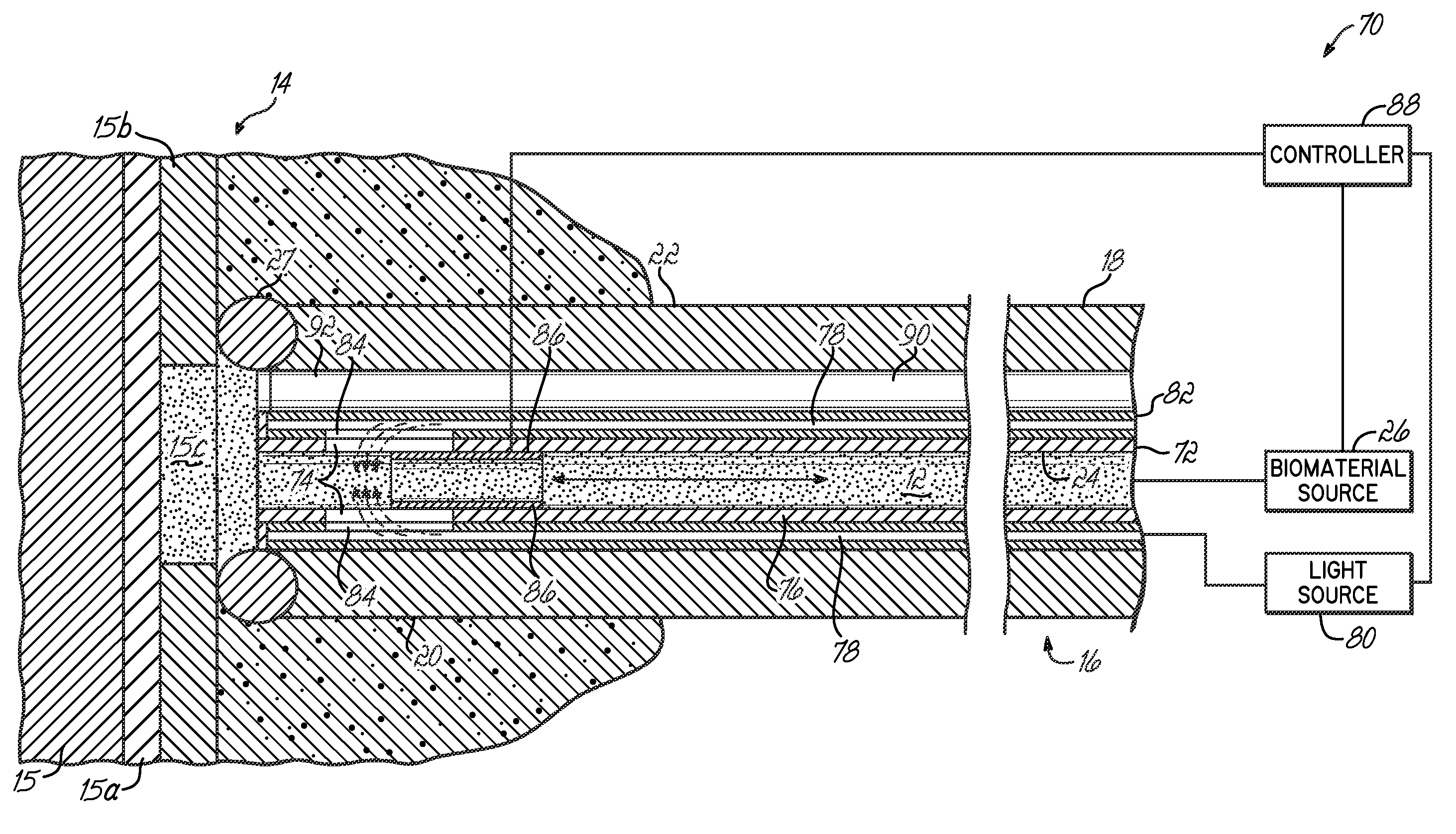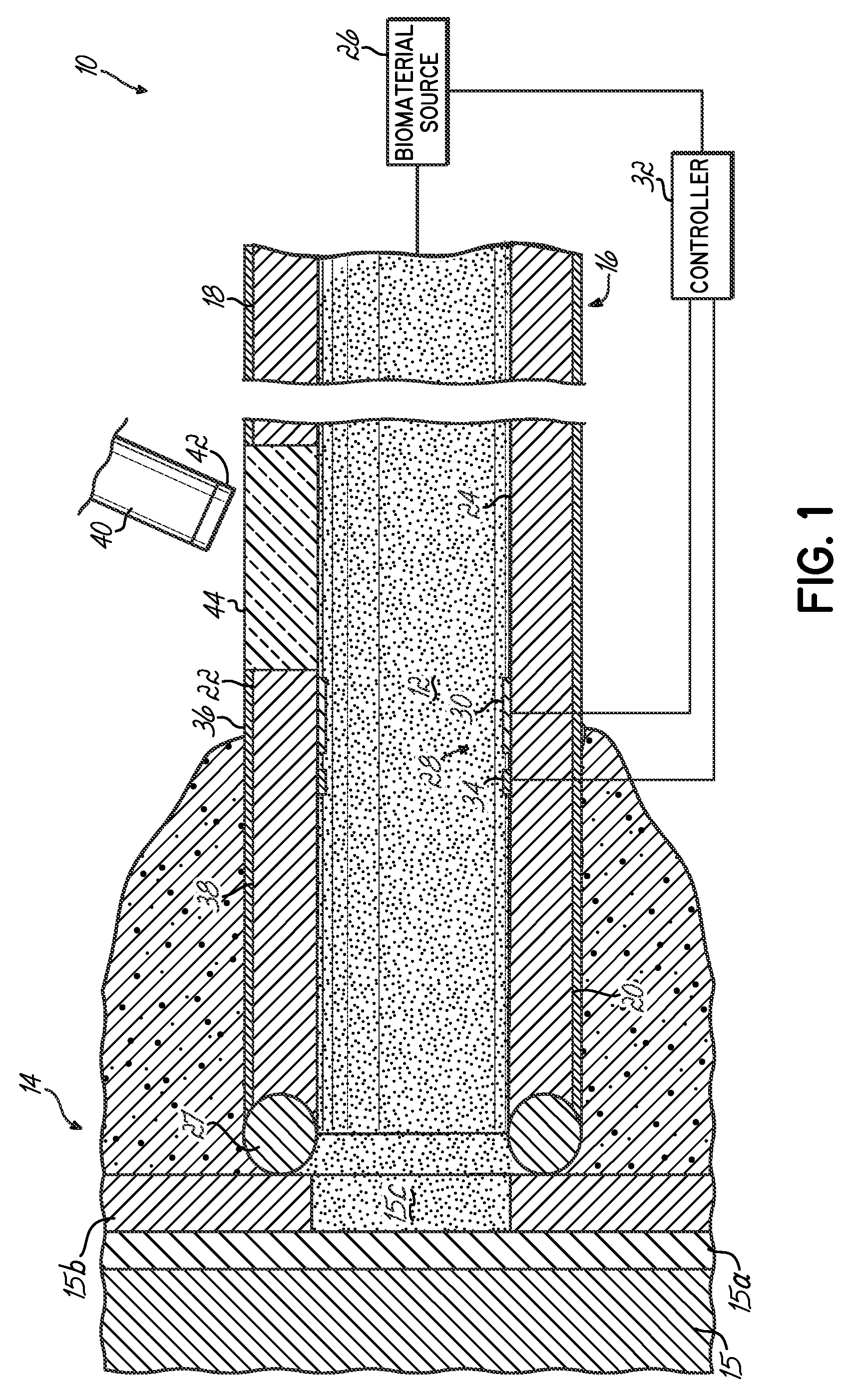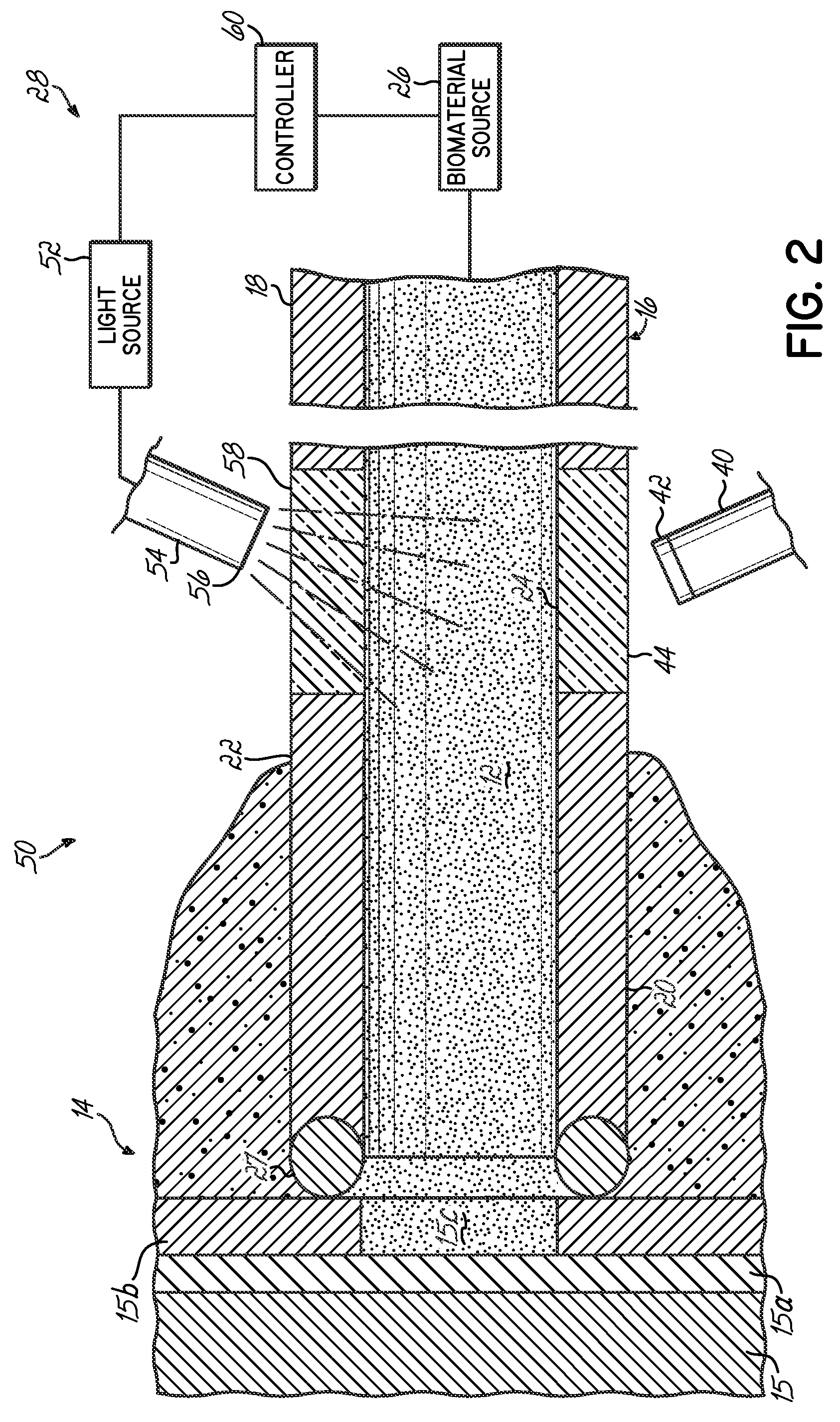Apparatus and method for delivering a biocompatible material to a surgical site
a biocompatible material and surgical site technology, applied in the field of minimally invasive apparatus and methods for delivering biocompatible materials to surgical sites, can solve the problems of loss of mechanical strength, limited healing of damaged cartilage, and even more susceptible cartilage to trauma, so as to reduce or prevent the leakage of biocompatible materials
- Summary
- Abstract
- Description
- Claims
- Application Information
AI Technical Summary
Benefits of technology
Problems solved by technology
Method used
Image
Examples
Embodiment Construction
[0018]Referring to FIG. 1, one embodiment of a device 10 for delivering a curable biocompatible material 12 to a surgical site 14 is schematically illustrated. The device 10 may be used in various surgical procedures, including orthopedic surgical procedures to effect repair of the musculoskeletal system. In one embodiment, the device 10 may be used in minimally invasive procedures, such as arthroscopic and endoscopic procedures, to effect repair of a joint. In one embodiment, the device 10 may be used in orthopedic surgical procedures in general or to repair the cartilage within a diarthrodial joint, such as the knee. By way of example, as shown in FIG. 1, the surgical site 14 may include bone 15, subchondral bone 15a, and cartilage 15b wherein cartilage 15b includes a defect 15c that is to be repaired using embodiments of the invention. The invention, however, is not so limited, as those of ordinary skill in the art will recognize a wide range of surgical applications that may ben...
PUM
 Login to View More
Login to View More Abstract
Description
Claims
Application Information
 Login to View More
Login to View More - R&D
- Intellectual Property
- Life Sciences
- Materials
- Tech Scout
- Unparalleled Data Quality
- Higher Quality Content
- 60% Fewer Hallucinations
Browse by: Latest US Patents, China's latest patents, Technical Efficacy Thesaurus, Application Domain, Technology Topic, Popular Technical Reports.
© 2025 PatSnap. All rights reserved.Legal|Privacy policy|Modern Slavery Act Transparency Statement|Sitemap|About US| Contact US: help@patsnap.com



